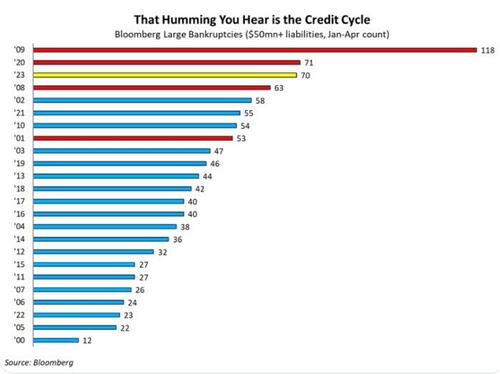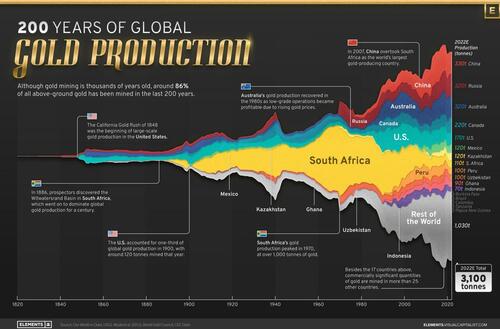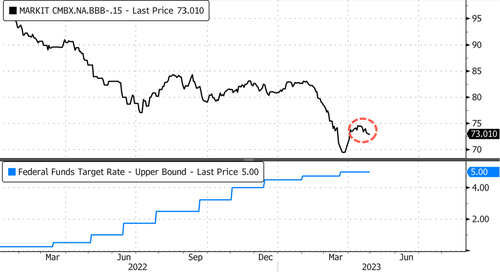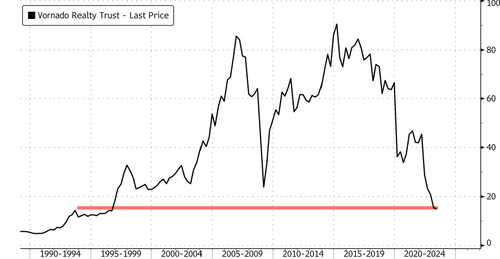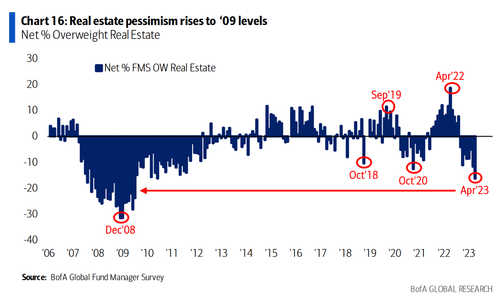Authored by Bob Maistros via American Greatness,
A Great American Opt-Out, the partition of the world’s foremost superpower into separate red and blue nations, is certainly not a subject to be taken – nor a suggestion to be made – lightly.

But a superpower won’t remain super when, as Victor Davis Hanson lately lamented, it must “fixate only on the irrelevant that we think we can address while ignoring the existential.”
These existential yet insoluble problems? They are self-inflicted wounds like weakened security, economic ruin, dysfunctional cities, nonexistent borders, transgender tyranny, and the weaponization of our justice system.
And add as a coup de grace—the ultimate point past the point of no return—Joe Biden’s diktat disappearing the internal combustion engine. This will accelerate a death spiral for automakers and power producers already overwhelmed by renewable mandates. It will accentuate energy poverty, lead to decreased private ownership of soon-to-be-unaffordable automobiles, and ultimately actuate a forced flight from capacious suburbs to cramped spaces in family-unfriendly urbs—and a crimped American Dream.
Why are these problems insoluble? Because any dissent from the ruling class narrative risks persecution, prosecution, “peaceful” (read riotous) protests, lawsuits, suspensions, canceling, and cutoffs of livelihoods and necessities.
Moreover, all meaningful avenues to counter mendacious, monolithic misrule by out-of-touch elites remain stubbornly blocked.
Today’s executive branch is a pen-and-phone and deep state-dominated operation, utterly disdainful of the people it is ostensibly devoted to serve.
Our justice system systematically weaponizes itself against that citizenry and the judiciary injudiciously generates inventive subversions of its will (See: Obamacare, DACA, transgender rights).
Corporate America co-opts portfolios and pension funds to undermine investors’ and workers’ interests in the service of a woke ideology, an even more woke corporate media colludes with one political party, and our woke culture devalues core American values.
We have a solve-nothing, spend-everything (and more) Congresses.
We have an electoral process that—whether or not irretrievably tainted by systemic fraud and rigged by an elite “cabal”—dubiously delivered not just the White House but also net midterm senatorial, gubernatorial, and state legislative gains to the party of the most decrepit, degenerate, disdained and disaster-inducing presidential incumbent in history.
Stein’s Law (as in Herbert) posits, “If something cannot go on forever, it will stop.” America’s paralysis in fixing existential problems cannot go on at all, much less forever, without a ceding of its superpower status—if not a Weimar-level collapse.
It must stop. Soon. But how?
Just as Issues & Insights has documented millions of citizens fleeing blue-state economic, political and social rot, the sole solution for Red America is to simply vote with its feet.
That is, walk. Opt out.
Some suggest the union’s geographically dominant red counties could lead such an exodus. But a more likely route is for red states—perhaps the 18 that unsuccessfully banded together to challenge the 2020 election results—to declare the union dissolved, whether due to that illegitimate outcome or because of the unceasing, extraconstitutional thwarting of sovereignty in the swamp. Perhaps invite red counties in blue jurisdictions to be annexed into neighboring jurisdictions, or even form new states.
In either event, it’s not difficult to conceive the formation of a provisional government, pending a new constitution and elections, including current members of Congress and federal judges from departing states, and an executive of existing governors.
Nor is it difficult to conceive the negotiation of dissolution terms, as previously suggested, including a joint defense pact and shared assumption of responsibility for unfunded liabilities. (Division of “trust funds?” A mere fiction in a nation $31 trillion in debt.)
An overwhelmingly conservative government could otherwise set about dismantling the nanny state in its jurisdictions while instituting the remedies to current maladies Victor Davis Hanson also identified.
In short, the logistics and implementation of partition are imaginable and manageable. The musts to muster? The willingness to admit that “out” is the only sustainable avenue to making America great again, given the hijacking of its commanding heights. The willfulness to advocate and agitate for that result. And the will to see a separation through.
Those elements may seem far off and unattainable given the lack of seriousness with which partition suggestions have been regarded to date, even among conservatives, and its regrettable association with the ill-fated and immoral Confederate cause.
But where was the transgenderism now darkly gripping America even a few years back? Who foresaw Black Lives Matter’s rapid rise and the rule of law’s sudden suspension? Or the Green New Deal’s nanosecond-long advance from political punch line to administration policy?
Opt-out must proceed, to succeed, with the same insistence, sense of urgency and level of volume as those efforts. Starting with igniting and incessantly fanning a fire in forums like these. Making it a theme of an unceasing series conservative gatherings and marches and hearings. Confronting candidates for every office at every level at every opportunity and thereby choosing and encouraging champions.
At America’s accelerated rate of decline, there is not a moment to waste. And with every elite political, economic, social, cultural, and judicial institution mobilized against its citizenry, no further “point of no return” to be passed.


